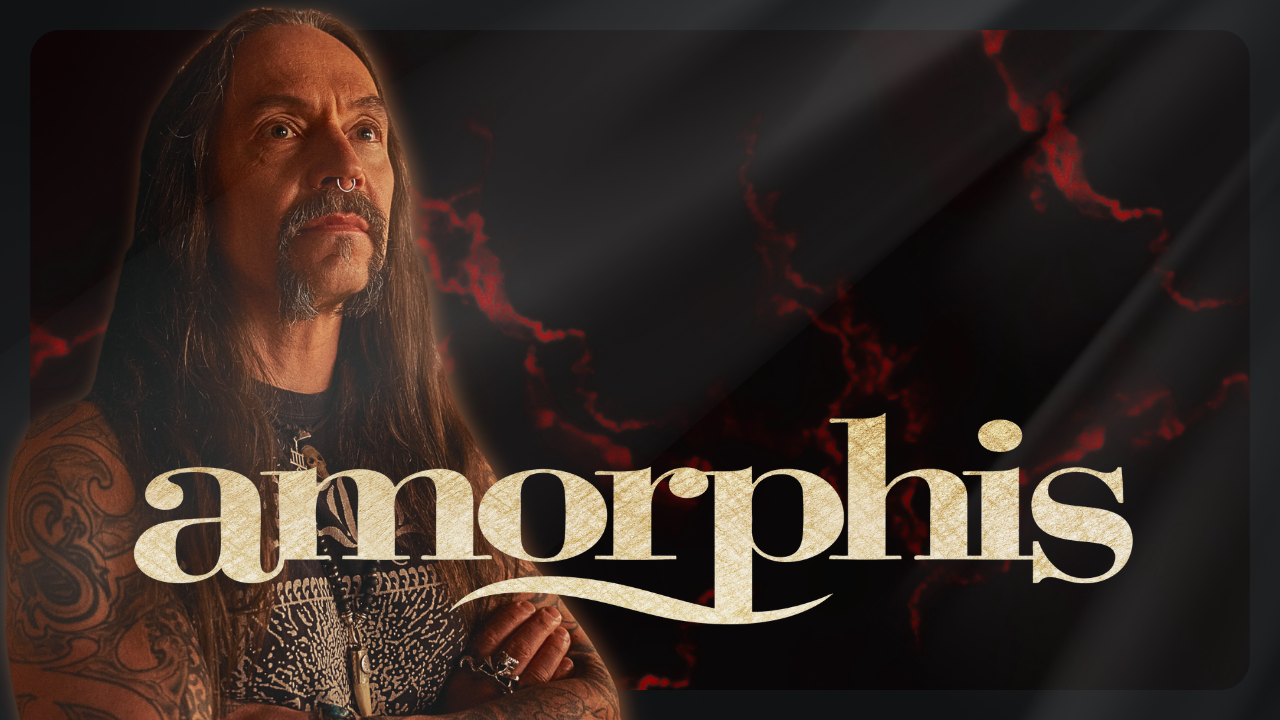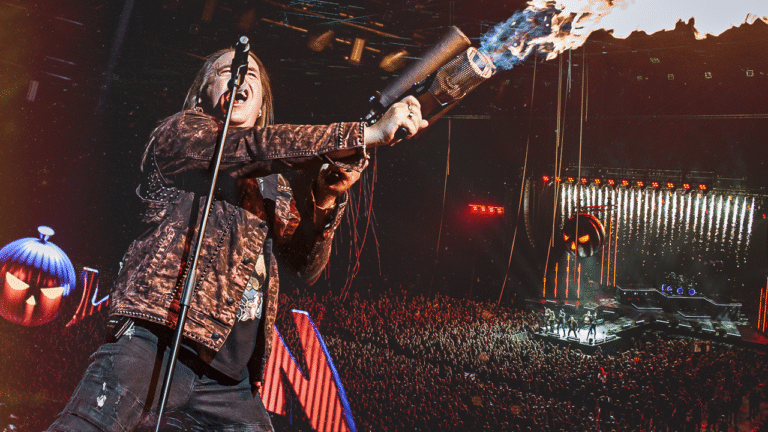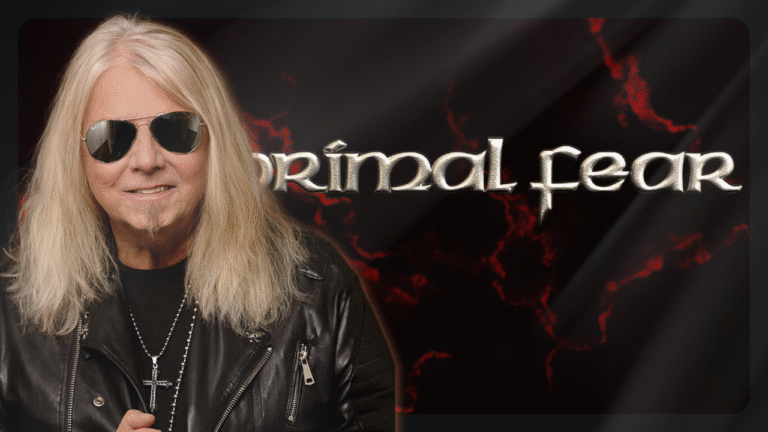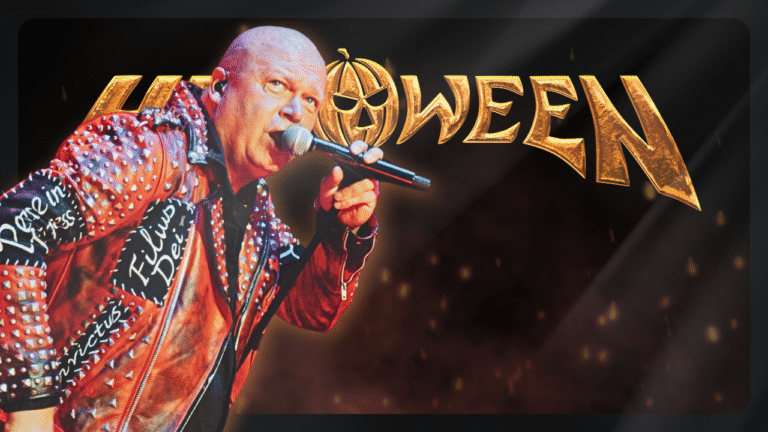“Personally, I think that pure art comes from people, not from the machines,” says Tomi Joutsen, frontman of Finnish metal titans Amorphis. His voice is calm, measured, the kind that’s lived through countless shows, tours, albums, and expectations. “What machines cannot do is create real emotions.”
It’s a quiet statement with loud implications, especially in 2025; a year when artificial intelligence is nudging its way into every corner of creativity. But Joutsen isn’t ready to concede art’s soul to the algorithm just yet. He’s busy working on the very thing he believes in most: human expression.
Amorphis are back with “Borderland”, the 15th album in their storied discography and the first to feature producer Jacob Hansen behind the board. But the conversation doesn’t stop at new mixes and tour prep. In a wide-ranging and thoughtful interview, Joutsen opens up about vocal growth, surviving as an artist, balancing family life, and reflecting on two decades since his career-defining debut with Amorphis on 2006’s “Eclipse”.
New Album “Borderland”: Fresh Collaboration and Band Dynamics
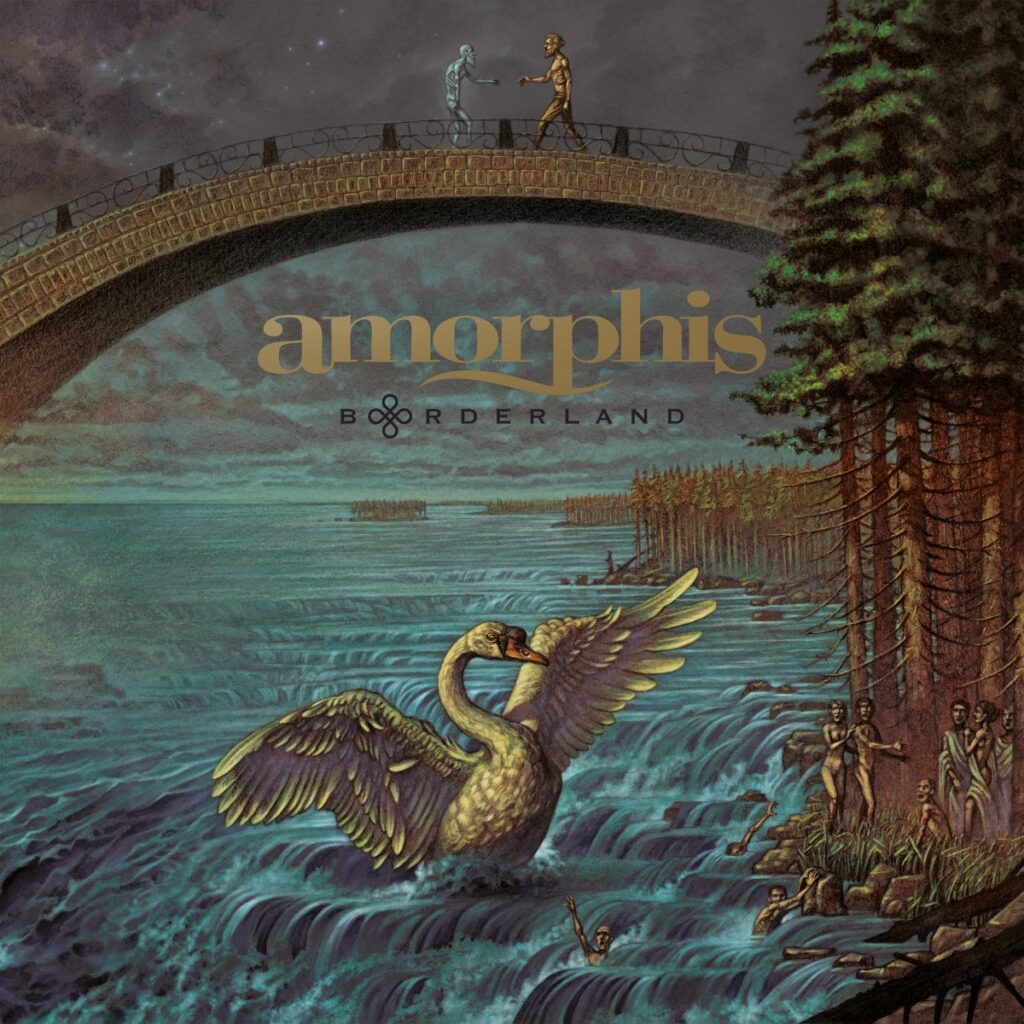
The making of “Borderland” brought a significant change for Amorphis: after three highly-acclaimed albums with renowned producer Jens Bogren, the band teamed up with Danish producer Jacob Hansen for the first time. Joutsen admits he wasn’t sure what to expect initially, but any worries were soon dispelled. “Well, it sounds Amorphis, of course it’s a little bit different, but the sound is there,” he says of hearing Hansen’s mixes for the first time. The group had heard great things about Hansen’s work and felt it was time for a new approach. “We trusted that he would be a great choice for us… that was the reason why we chose him,” Joutsen explains. Hansen’s friendly, low-key style fit the band well. “He’s really friendly and really creative… I’m pretty happy that we started to work with him,” Joutsen notes, adding with a smile, “he’s a great guy overall”.
Creative duties on Borderland were a true team effort. Joutsen recalls that the band wrote roughly 25 demo songs and handed them all to Hansen. “He trusted us a little bit more as a band. I mean, he didn’t do that much pre-production… We had like 25 songs or demos and he picked 13 songs altogether,” Joutsen says. Letting the producer trim the material helped avoid internal squabbles: “Sometimes when there are six persons in a band and everyone has their own favorite songs, it’s a messy situation to pick songs,” he explains. In this case, Hansen’s picks ended up favoring the band’s primary songwriters, keyboardist Santeri Kallio and guitarist Esa Holopainen. “Everyone composed something except me… But Jacob didn’t pick those songs for the album… I totally respect that,” Joutsen chuckles, noting that the others took it in stride. After two decades together, Amorphis has learned how to keep egos in check. “We try to keep a good democracy in the band… it’s not always fun when you have worked with these guys over 20 years, but mostly it’s easygoing and relaxing,” Joutsen says. Despite the occasional creative tension, “everyone’s trying to be professional and not fighting, and there are no ego problems in Amorphis at all.” That healthy camaraderie comes through in Borderland’s cohesive sound.
Lyrically, Borderland continues Amorphis’s tradition of epic, mythic storytelling (longtime collaborator Pekka Kainulainen penned the lyrics). One theme resonates strongly with Joutsen: the notion that past generations endured the same struggles we face today. “People before us… have been struggling with the same stupid problems that we are struggling with nowadays,” he reflects, finding comfort and connection in those ancient tales. At its core, the album is a full-spectrum artistic statement. If someone in 2050 were to dust off an old “Borderland” vinyl, Joutsen hopes “they find some beautiful moments in the album.” From the emotional melodies to the rich artwork, “Borderland” is meant to be experienced as a whole. “I see the album as a work of art. It’s like a total thing – music and lyrics and also artwork… And I hope they find something beautiful from this work of art,” he muses.
Art and AI: The Human Element
The conversation turns philosophical when the topic of artificial intelligence in music comes up. In 2025, AI-driven tools are creeping into all corners of artistic expression, from song-generating algorithms to automated mixing. Joutsen, with decades of real experience under his belt, has given this some thought. For him, choosing a life in art is a profound commitment, one that machines can’t replicate. He recalls discussing the value of an artist’s life with lyricist Pekka Kainulainen, who struggled for 27 years before finding recognition. Is it a wise career path? In the end, Joutsen believes, it boils down to passion. “If you really are into arts… it’s a passion. And if you have a passion for something, it’s almost impossible to avoid being an artist 24/7,” he reflects. “It’s hard work… not the easiest path, but at the same time, it can give you so much. It can be [a] fantastic choice”.
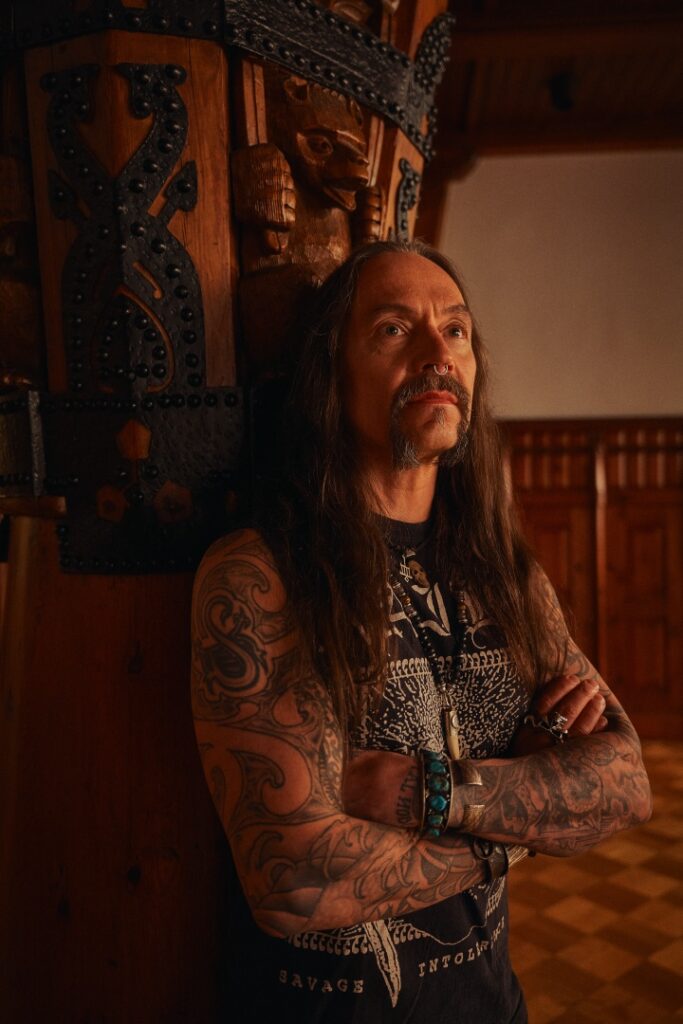
That perspective informs Joutsen’s measured take on AI in music. He acknowledges that technology is already deeply woven into production today – after all, even human artists rely on digital tools. “Nowadays I think most people are using plugins and stuff… so it’s not like totally pure art if you think it that way,” he points out. He has no issue with musicians using computers as creative tools (“if someone wants to do everything with computers and programs, it’s okay for me,” he says). But when it comes to the soul of the art, Joutsen draws a clear line between human and machine. “Personally, I think that pure art… comes from people, not from the machines,” he emphasizes. A program might imitate tones and patterns, but “what machines cannot do is create real emotions. They don’t understand what it’s like to feel, what it’s like to really love or hate or suffer,” Joutsen explains. “You need all of that – all of the emotions – if you want to bring something unique or true”. In other words, the depth that comes from a lifetime of human experience simply can’t be faked by an algorithm. And that, in Joutsen’s view, is what will always set genuine art apart in an AI-saturated world.
Vocal Evolution and Singing Lessons
Even with hundreds of shows under his belt, Joutsen remains a student of his craft. In the past year he began taking singing lessons to improve his endurance and technique. It hasn’t been easy. “Singing… is such a big thing, and when you’re starting to learn it at my age, it’s really a big challenge,” he admits frankly. Pushing 50, Joutsen is working to expand his abilities while maintaining the voice fans know and love. “I’m trying to be open-minded and find the right way to express myself – an easier way to express myself,” he says of his goal for the lessons. One specific aim is to hit higher notes more comfortably. “I also wanted to hit a little bit higher notes because I’m sometimes struggling with high notes when we are on tour,” he shares. “Maybe someday I’ll find a way to do that. So far it’s been struggling. But it’s been fun, you know”.
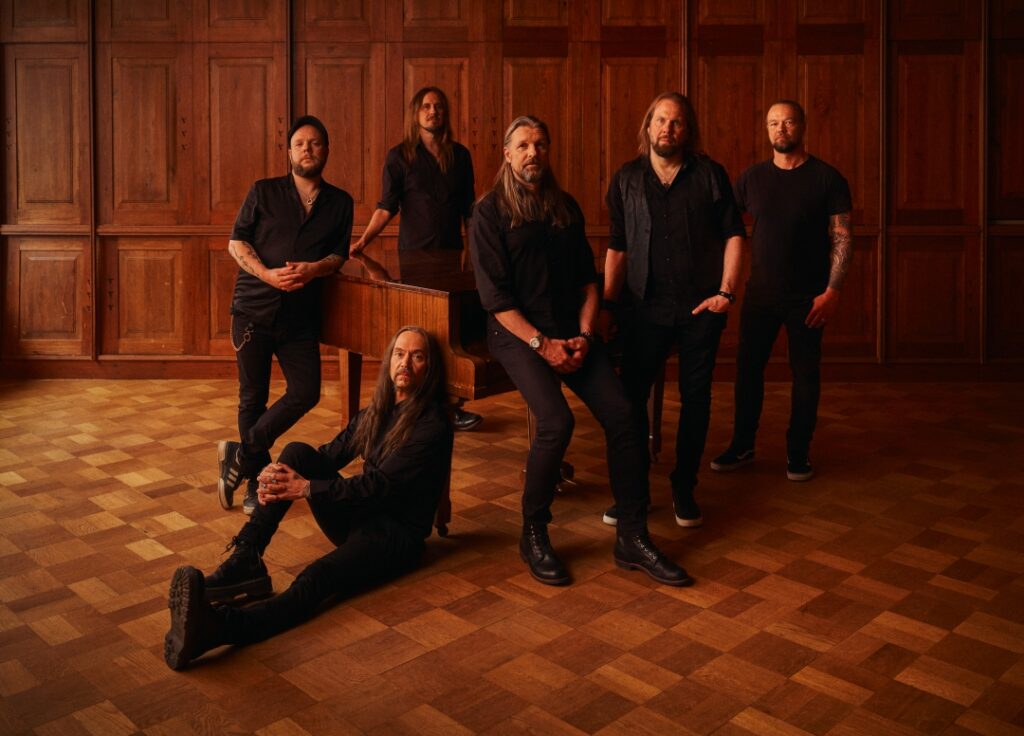
Joutsen speaks with humility about the process, joking that his vocal coach – 15 years his junior – makes everything sound effortless. “Every time she’s singing something, it sounds really easy,” he laughs. “I’m trying to be as great as she is, but it’s impossible because she’s been doing singing almost every day for 15 years”. Still, he’s already seeing benefits in his stamina. Proper warm-ups and rest on tour have made a noticeable difference. “Maybe on tour it helps if you have a proper time to warm up your voice before the show and you had a good sleep on the bus and you are relaxed when you go on stage, then it’s easier to concentrate and it’s easier to be more relaxed,” he says. Of course, ideal conditions aren’t always possible, especially during hectic summer festival season. When schedules are tight, Joutsen admits you sometimes “lose yourself on stage just trying to survive” and old habits take over. Through it all, he maintains healthy routines to protect his voice. “Some people just have it… For me it’s not like that,” he says of natural talent. “I’m just trying to do my best. I’m just trying to keep up some good routines… And I think those routines help me a little bit. They give me power to do the shows”.
Another unique challenge is switching between harsh growls and clean singing, often several times in the same song. Joutsen has become famous for it, but even he is still learning. So far, his lessons have focused only on clean vocals. “My teacher… doesn’t know anything about distorted or growling vocals,” he says, noting that later on they plan to “dive in” to proper growl technique. After years of trial and error on the road, Joutsen has a good sense of his own limits. “I know how my body works and if I’m relaxed, I can do things easily,” he explains. But after six or seven shows in a row, even he starts to feel the strain: “it starts to hurt my voice a little bit… but that’s part of the business,” he shrugs. Ultimately, singing both styles is a conscious choice he stands by. “It’s a thing you have to deal with when you are a singer, and it’s my own choice that I’ve chosen to use both styles,” Joutsen says resolutely, “and I just have to live with that”.
Balancing Family Life and Touring with Amorphis
Juggling the life of a world-renowned metal frontman with family responsibilities is tricky for many, but Joutsen seems to have found an equilibrium. “For me personally, it’s been quite easy,” he says of balancing fatherhood with life on tour. He then grins, “but if you ask my wife, I think she has a different opinion about it”. Joutsen’s children have grown up around their dad’s unusual career and adapted to it. “My kids, they’ve been used to it actually. They are adults already, so there is not that much problem anymore,” he notes, reflecting that over the years “it has been a good balance for me”.

One reason the arrangement works is that Amorphis isn’t on the road 365 days a year. “We are not the most hardworking band in the scene,” Joutsen admits. “Some years we played like 120 shows in a year, and that was a lot. But still, I had time to spend at home with my kids and my family”. In fact, when the band is off tour, he’s home full-time. Comparing himself to a typical working parent, Joutsen believes he’s “been at home more… than the average guy, because between the tours I have been at home 24/7”. Early in his Amorphis days, he did try to hold down a day job in addition to band duties. After a few years it became too much. “When I started with Amorphis, I still had a day job… It started to be too much and I quit my job,” he recalls. Stepping away from regular employment was a leap of faith, but one that ultimately paid off.
Crucially, Joutsen doesn’t take his situation for granted. Coming from a small country like Finland, he knows it’s rare for a metal band to make a full living. “On the other hand, I’m really happy that I had a chance to have that normal life, so I can always go back to [it],” he says of having experienced both worlds. The success of Amorphis is something he remains grateful for. “I totally understand how lucky we are that we can do this for a living in a small country like Finland where everything is so small,” Joutsen acknowledges. “We are really lucky guys that we can do this kind of music for a living”.

